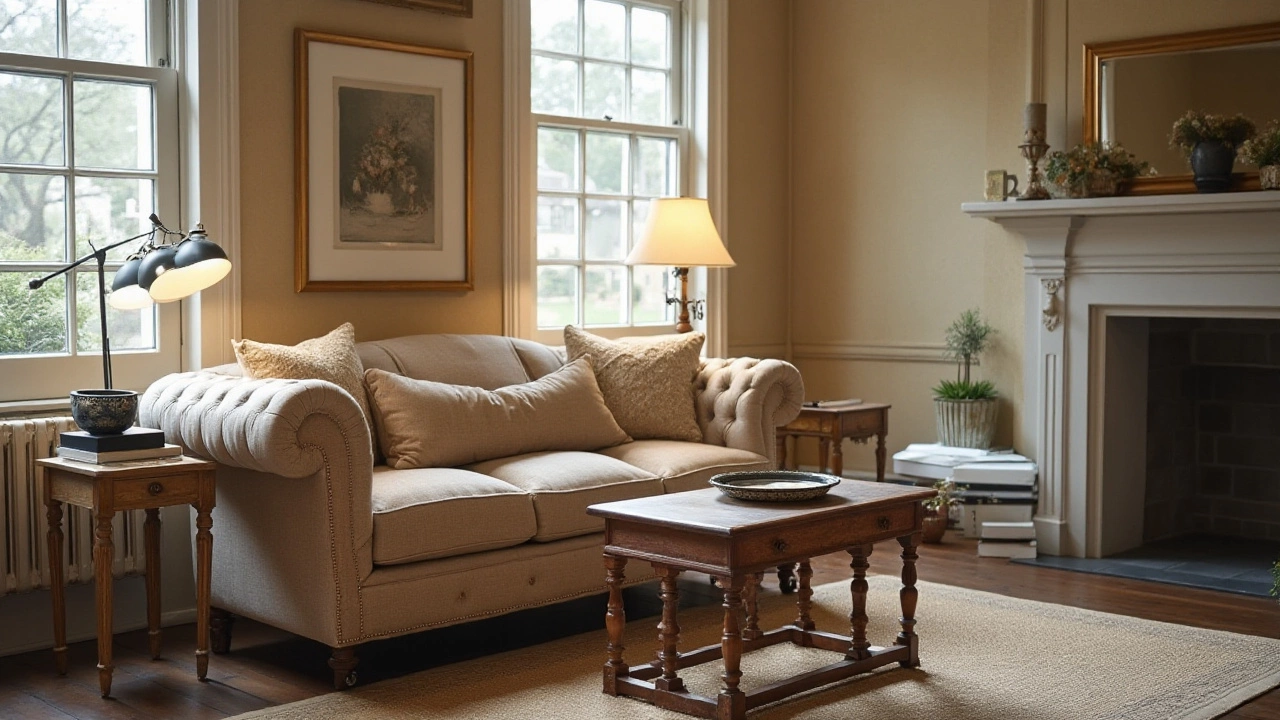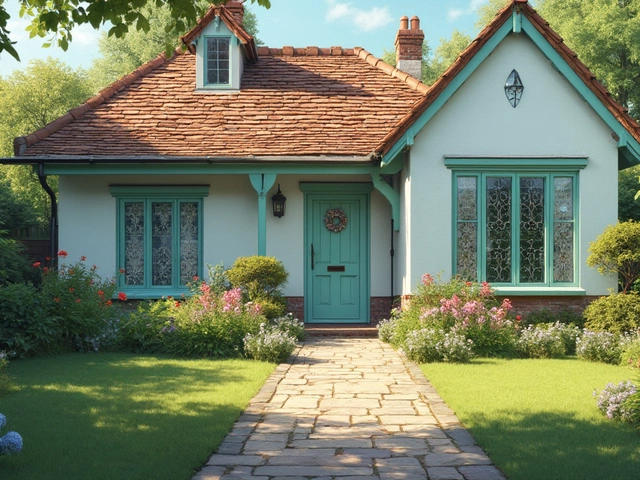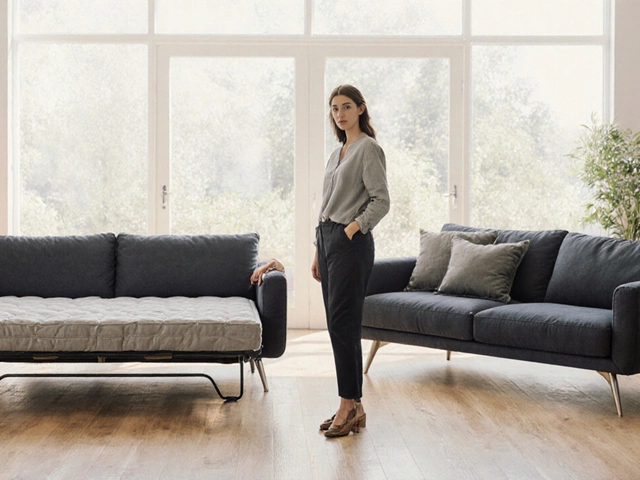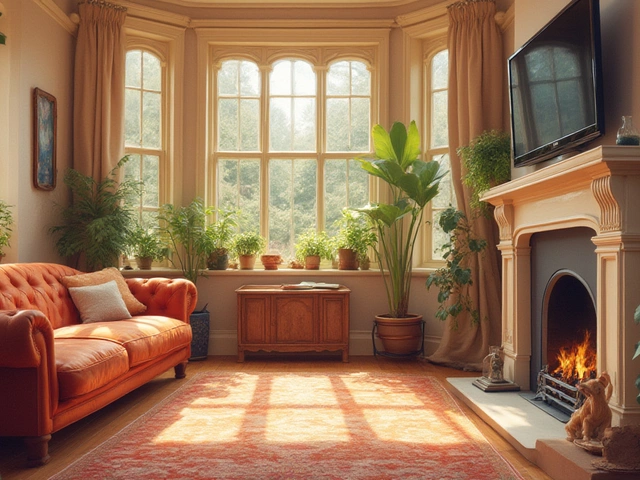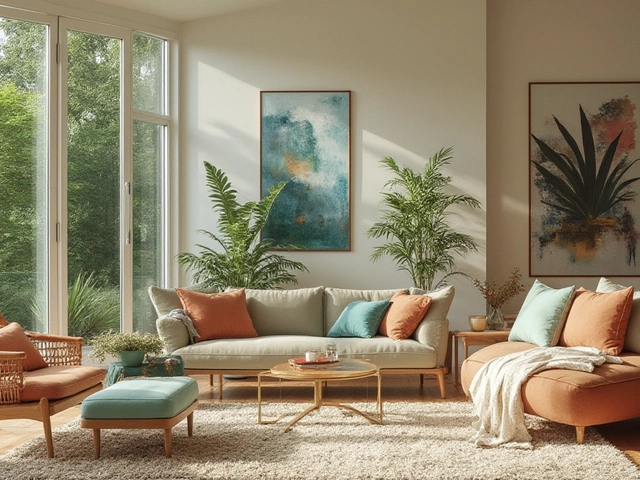When pondering the right height for a coffee table, you venture into a realm where form meets function, playing a pivotal role in your living room's harmony. While often an overlooked piece of furniture, the coffee table is more than just a surface to place your mug or magazines—it's an essential component of your seating arrangement that blends aesthetics and practicality.
Join me as we explore the ideal heights for coffee tables, guiding you through the maze of design choices to find one that perfectly meshes with your sofa, enhances your style, and optimizes your living space's utility. Whether you're revamping your home or simply looking to replace an aging table, understanding these concepts will ensure your coffee table serves both your everyday needs and design aspirations.
- Understanding Standard Coffee Table Heights
- Considering Sofa and Seating Arrangements
- Design Principles for Aesthetics
- Practical Tips for Choosing the Right Height
- Influence of Room DIMENSIONS
- Personal Preferences and Style Choices
Understanding Standard Coffee Table Heights
When it comes to choosing the right height for a coffee table, understanding the standard measurements can save you a great deal of hassle. Generally, the rule of thumb is that a coffee table should stand at a height that is even with or slightly lower than the seat of your sofa or armchairs. This ensures a comfortable reach for anyone seated, without having to stretch awkwardly or bend too much. Typically, standard coffee tables range between 16 to 18 inches in height, which often aligns perfectly with most standard sofa seat heights of around 18 to 20 inches.
Interestingly, while these measurements seem to have become benchmarks over time, they haven't been plucked out of thin air. They represent a blend of ergonomic design research and traditional furniture-making practices. A coffee table that's too high can disrupt the visual flow of the space, making the seating arrangements feel disjointed. On the other hand, a table that's too low might lead to discomfort while reaching for items even if it appears modern.
Customizations and exceptions, of course, have their place. For instance, if your couch sits higher than usual, you might consider a taller table to match it. Or, if your living space embraces a more laid-back, lounge feel, perhaps with floor cushions, a lower table might suit your needs better. According to furniture designer Nathan Tarcin's insights featured in Design Home Magazine, "Matching the coffee table height with the living room furniture not only facilitates comfort and utility but also highlights the room's cohesive design language."
The history of coffee tables is rooted in the tradition of low tables used in drawing rooms in the early 20th century, originally meant to complement the sofas of the time. Since then, design trends have evolved, but the essence remains—creating a communal space where people gather comfortably. In today's modern world, with a variety of styles, the market offers coffee tables in a range of heights, challenging the so-called standards, as designers experiment with creative living room setups.
To aid in your decision-making, it's beneficial to consider both the function you envision for your coffee table and the aesthetics you desire. If the table is meant mainly for display purposes or will typically host light items like books and decor, a lower profile might add an air of sophistication to the room. Conversely, if your coffee table doubles as a dining spot or involves active use, aligning with the seat heights around it ensures practical convenience combined with aesthetic charm.
Considering Sofa and Seating Arrangements
The relationship between a coffee table and your sofa is akin to the harmony of a well-rehearsed duet. The height of your coffee table should work seamlessly with the height of your sofa to create a space that feels both comfortable and cohesive. The traditional rule of thumb states that the top of a coffee table should sit about one or two inches below the height of the seat cushions on your sofa. This typically translates to a coffee table height of around 16 to 18 inches for standard sofas. However, with modern furniture styles ranging from low-slung sectionals to high-backed Chesterfields, the standard isn't quite as cut-and-dried as it once was.
Keep in mind that your seating arrangement influences more than just the primary sofa. Every piece of seating furniture in your room, from armchairs to loveseats, should interact comfortably with the coffee table. It’s important for the table to be easily accessible for all seating. Imagine hosting a gathering where guests have to awkwardly stretch to reach the table or, worse, bump into furniture trying to pass a shared bowl of snacks.
"The right coffee table height is pivotal not only for functionality but also to maintain the aesthetic balance of your room," notes interior design expert, Kelly Hoppen. "Consider both your main sofa and any auxiliary seating to ensure harmony throughout your space."
Creating a Balance in Low vs. High Seating
With varied styles in modern interiors, balancing taller and lower seating is crucial. Low-profile sofas, often seen in contemporary designs, may require a shorter coffee table of about 12 to 14 inches to maintain a proportional look and ease of use. Conversely, if your space includes higher-seated chairs or sofas, you may find a taller table of approximately 20 to 22 inches more fitting, especially for a traditional or formal living room setup. Consider the variety and height of other furniture pieces like side tables and ottomans to ensure a well-coordinated environment.
If your seating is arranged in a U-shape or an L-shape around the coffee table, measure all sides for comfortable access. A practical layout allows enough space to navigate around the table yet close enough to reach safely and without strain. For cramped spaces, opt for models with soft, rounded edges to minimize impact in tight quarters—a tip especially useful for households with young children or pets. The unique dynamic and dimensions of your seating will guide your ultimate choice in selecting the ideal coffee table height.
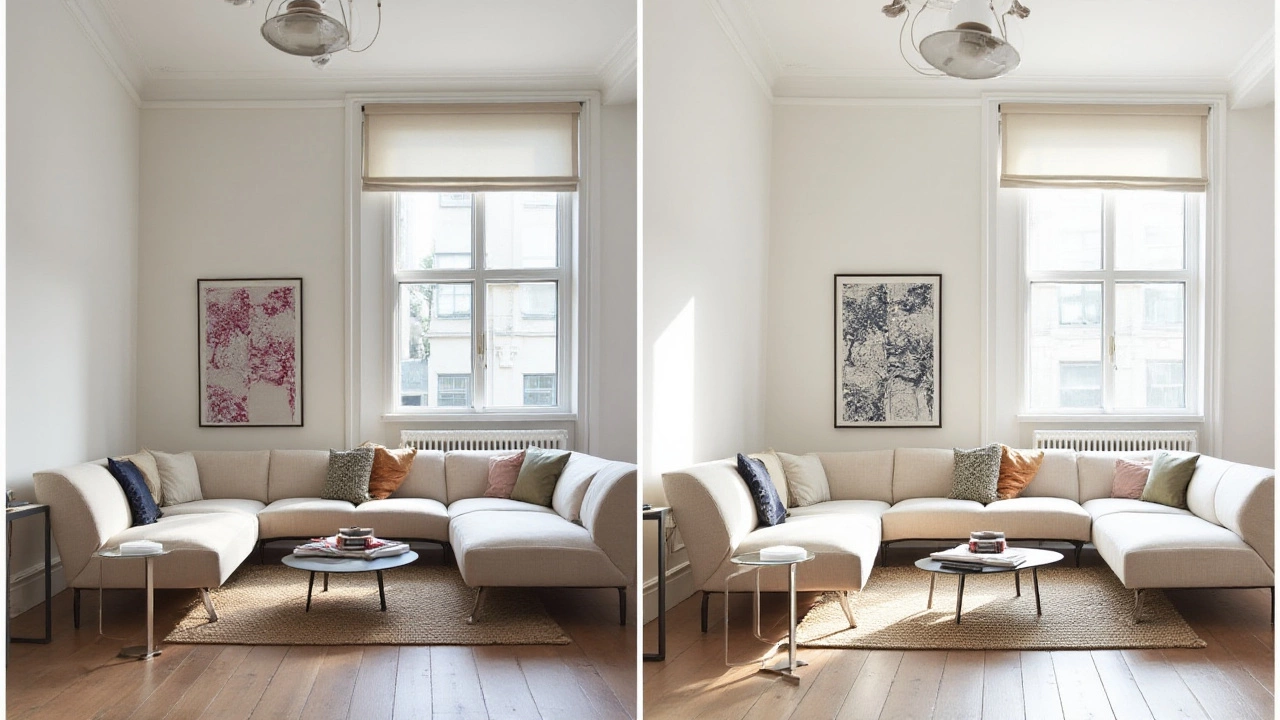
Design Principles for Aesthetics
When diving into the world of interior design, particularly in selecting a perfect coffee table height, one must consider aesthetics as much as practicality. A coffee table sits at the heart of the living room ensemble, playing a key role in dictating the flow and feel of the entire space. Achieving aesthetic harmony involves carefully balancing height in relation to surrounding furniture, materials, and the architectural style of the room. As a starting rule, the height of a coffee table should ideally match, or be slightly lower than, the seat height of the surrounding chairs or sofas. This alignment not only assures comfort for guests but also facilitates a visually cohesive look.
Visual balance is a crucial factor in design aesthetics. Imagine a living room where the coffee table stands as an artistic centerpiece, coordinating with the shape, color, and texture of other elements in the room. It's not just about the ideal coffee table, but how it complements the sofa's contours or echoes the lines of a fireplace mantel. Materials in coffee tables further contribute to their aesthetic appeal. For instance, a glass table can create an illusion of space, perfect for a cozy apartment setting, whereas robust wooden tables add warmth and classic charm to a more expansive room. Jewel-like metallic tables, often seen in modern designs, can offer a dash of glamour to minimalist settings without overwhelming the existing decor.
Aesthetics also hinge on proportion and scale – both paramount in maintaining the room’s amazing equilibrium. It’s beneficial to envision the space as a canvas where every piece contributes to the overall composition. The coffee table, although central, should never overshadow the rest of the furniture. Should you choose a round or oval table, it can soften a room filled with angular furnishings, offering a gentle contrast. Rectangular and square tables, on the other hand, provide a sense of structure and might complement modular or sectional sofas effectively. In determining the visual weight of a piece, it’s wise to consider the balance between airy, streamlined forms and heavier, more substantial ones that suggest permanence.
Color plays a substantial role in aesthetically designing your living room with a coffee table. While neutral colors like white, beige, or grey can seamlessly fit into varied decor themes, bolder hues might stand out, making a statement. A teal or mustard yellow table, for instance, can transform an otherwise muted space into a lively, engaging area. The idea is to use the coffee table as a bridge between the color schemes of the room, ensuring it doesn’t clash but instead adds to the room’s vibrancy. As renowned designer Nate Berkus once mentioned, “Your home should tell the story of who you are, and be a collection of what you love.”
Your home should tell the story of who you are, and be a collection of what you love. - Nate Berkus
Ultimately, when considering the design principles focused on aesthetics, one must also account for cultural and personal narratives woven into the fabric of home decor. A coffee table acquired from a trip abroad, or one handcrafted with local materials, imbues the room with personality and evokes cherished memories. Interior design isn’t merely about aesthetics—it’s an extension of identity, a platform where past encounters and future aspirations coexist harmoniously. It’s this very personal touch that transforms a dwelling into a home, making every element, including your coffee table, a reflection of your inner world and an invitation to share stories with whomever gathers around it.
Practical Tips for Choosing the Right Height
Deciding on the right height for your coffee table can seem like a minor detail, but it's one that profoundly affects your living room's functionality and comfort. First and foremost, you should aim for a coffee table height that aligns well with the seating around it. Ideally, your coffee table should be about the same height as the cushions on your couch, typically ranging between 16 to 18 inches. This range provides a comfortable reach for most people when sitting, ensuring a seamless interaction between your seating and table.
Another crucial factor to consider is the primary use of your coffee table. If your table doubles as a dining spot for casual meals, you might prefer it slightly higher, around 19 to 21 inches. Conversely, if it's often used for relaxation, a standard height that is neither too high nor too low enhances the cozy atmosphere. Additionally, larger sofas or sectionals typically blend better with taller tables for easy access. It’s a balancing act between aesthetics and practicality.
Matching the shape and style of your coffee table with your existing decor is equally significant. For instance, a glass-topped table adds a touch of sophistication and can make a small room appear larger, while a wooden table brings warmth and intimacy. To avoid overwhelming your space, maintain a balance where the width of the table does not exceed two-thirds of your sofa's length.
Consider how your coffee table height influences the room's traffic flow. People should easily pass through without having to maneuver awkwardly. If younger children are frequent guests, lower tables might be safer, reducing the risk of accidental bumps and bruises. Engaging with these factors holistically creates a synchronized space that meets diverse needs. As renowned designer Emily Henderson once suggested,
'Your coffee table should compel guests to lounge a little longer.'This advice resonates well with the importance of thoughtful selection to ensure the coffee table complements the lifestyle and volume of activity in your home.
Ultimately, selecting the right coffee table height should enhance both the functional and visual appeal of your space. Test different heights by simulating scenarios like reaching for a book or a cup of coffee. The right height is the one that effortlessly fits into your daily rhythm, supporting the seamless flow between relaxation and social interaction.
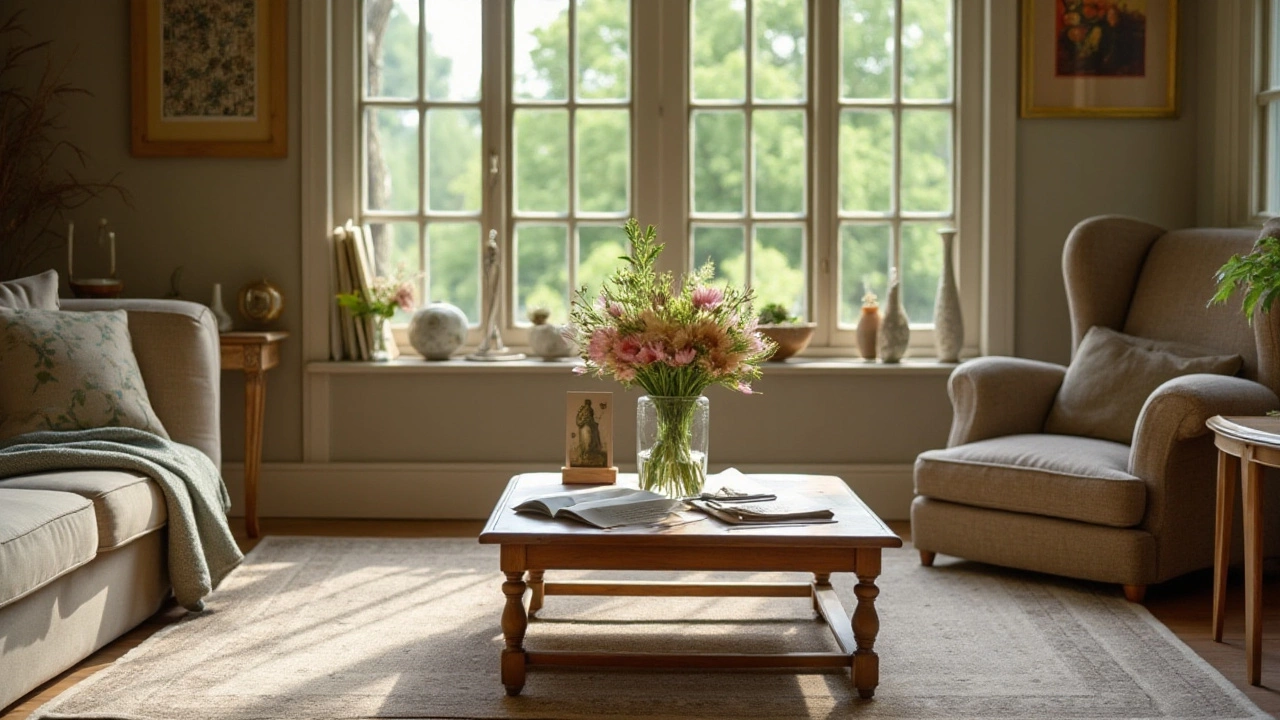
Influence of Room DIMENSIONS
When it comes to selecting the perfect coffee table height, the dimensions of your room cannot be ignored. The size and layout of the room dictate not just the suitable height but also the overall size and shape of the table. Large, open spaces might call for a more substantial coffee table that commands attention, perhaps one that serves as a central focal point. In contrast, cozy or tighter areas tend to benefit from smaller tables, allowing for ease of movement and a less cluttered look. The harmony between the table and the room ensures a balanced and intentionally curated space.
Several factors within your specific room dimensions affect the decision. Consider the scale of your furniture and the general proportions of your living area. A common guideline is keeping the table no more than two-thirds the length of your sofa, ensuring it complements rather than overwhelms your seating area. Additionally, the placement of the table within the room's flow is crucial; it should neither obstruct pathways nor impede conversation lines. Maintaining such balance can significantly enhance the ergonomic experience of your space, making it both functional and inviting.
"A coffee table that is perfectly proportioned to your sofa and room dimension serves as an anchor, a visual and practical centerpiece that ties all elements together," suggests interior designer Jane Fergusson, highlighting the impact of a well-chosen table size on the overall room design.
Another important factor to consider is the room’s ceiling height. A higher ceiling can visually 'lift' the appearance of furniture, giving you more flexibility with taller coffee table designs. Conversely, lower ceilings might make a taller table feel out of place, encouraging the use of sleeker, more minimal designs. This interaction between vertical and horizontal space influences how a room's dimensions interplay with table selection, subtly affecting the perceived volume and openness of the area.
Lighting also indirectly dictates the suitability of a coffee table's dimensions. For instance, rooms with abundant natural light might allow for a broader range of styles due to the enhanced visibility and accompaniment of shadows, which can render a space larger than it actually is. In contrast, dimmer rooms may benefit from sleek, unobtrusive tables to prevent the space from feeling cramped. Incorporating a table made of reflective materials like glass or shiny metals might amplify the available light, further enhancing the room's ambiance.
The Role of Room Layout
Room layout also plays a significant role in the choice of coffee table. Open-plan settings that incorporate various sitting areas may benefit from multiple smaller tables or a group of tables clustered together. This approach emphasizes flexibility and can cater to different needs in different parts of the room. On the other hand, a traditional, closed-off living room setting may invite a single, central, and more commanding piece that unifies the decor and purveys a sense of hospitality and cohesion.
| Room Size | Suggested Table Size |
|---|---|
| Small | 25-40% of sofa length |
| Medium | 40-60% of sofa length |
| Large | 60-70% of sofa length |
Understanding these intricate details about how your room's dimensions affect table selection can transform your living space. From creating visual appeal to maximizing functionality, the right fit enhances both the room's aesthetics and the satisfaction it offers its occupants. Remember, while general guidelines exist, the ultimate choice reflects personal taste and the unique character of one's home.
Personal Preferences and Style Choices
The quest for the perfect coffee table height is not bound by rigid rules; instead, it dances with the beat of personal preference and style. As you delve into this journey, consider the interaction between your tastes and the ambiance you wish to create. The right coffee table height can punctuate your living space with flair or subtly marry with its surroundings, whispering elegance or exuberantly making a statement. While conventional wisdom advises a coffee table height matching the seat height of your sofa, often ranging from 16 to 18 inches, the canvas remains large for innovation. Bold choices in height can introduce dynamic layers to your décor, emphasizing the diverse nature of contemporary design.
Exploration of style should complement this personal touch. Many are surprised to learn how much a few inches in height can dramatically alter the room's essence. Low tables evoke a mid-century modern aesthetic, hinting at a cozy, lounging vibe, while taller tables fit perfectly in eclectic or transitional settings where formality and function coalesce. As interior design icon Nate Berkus famously stated,
"Your home should tell the story of who you are, and be a collection of what you love."Why not let your coffee table stand as a testament to this philosophy, choosing a height that harmonizes with personal narratives and lifestyle needs?
There is a magnetic allure in mismatched heights, where creativity reigns, inviting a perception shift on what living space can be. This isn't merely about aesthetics; the right height caterers ergonomics too. Those who frequently entertain might prefer a higher surface, facilitating easy reach for guests. In contrast, a lower table makes for an inviting scene, encouraging guests to sit back, relax, and let conversation unfold naturally. Embracing your inner designer becomes not only an exercise in taste but also in practicality, allowing your living room furniture to reflect who you are while serving your unique comfort needs.
For those curious about data, consumer surveys often highlight a preference for coffee tables between 15 and 19 inches high. This sweet spot balances traditional sitting comfort with modern sensibilities. Artisans often craft bespoke furniture harmonizing timeless, classical forms with cutting-edge design principles. In doing so, they consider not just how a piece will look, but how it will blend daily functionality with the tales you wish to tell through your home's design.
